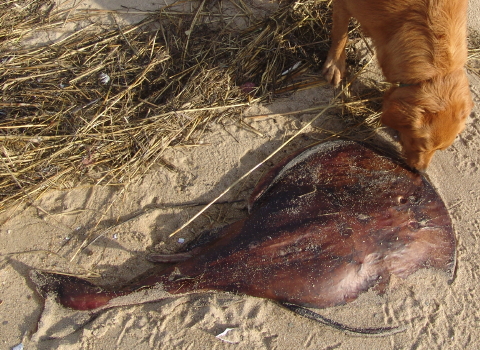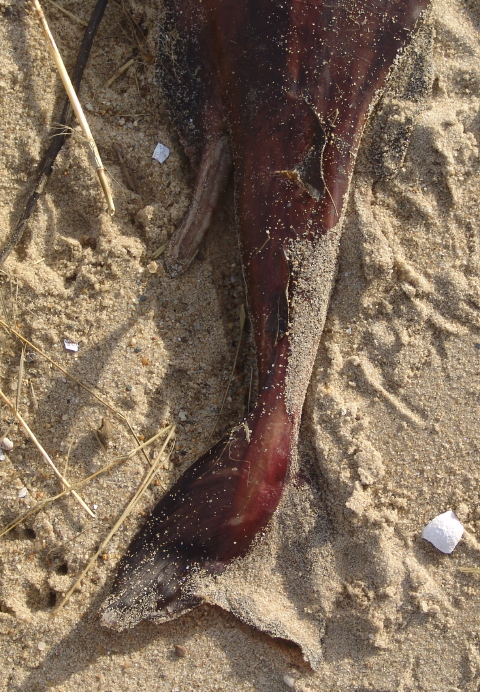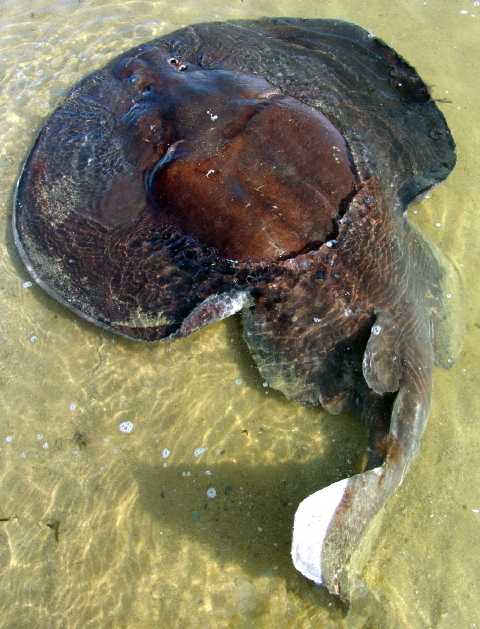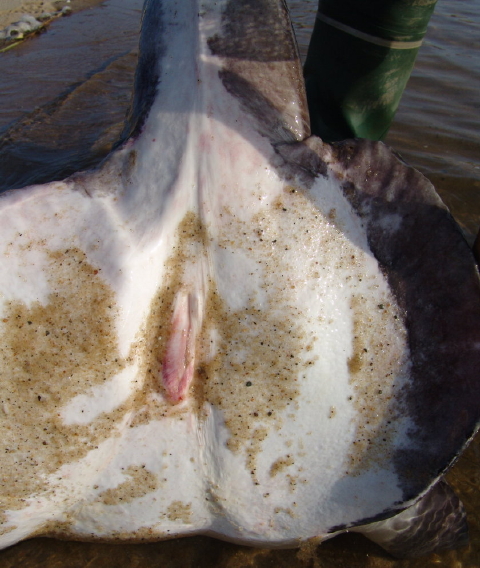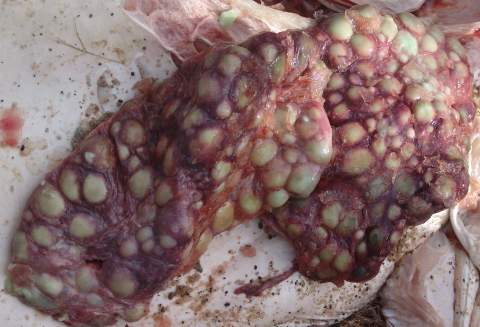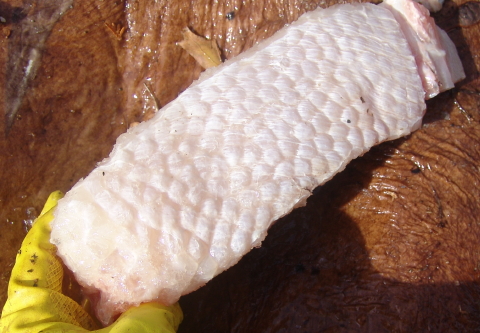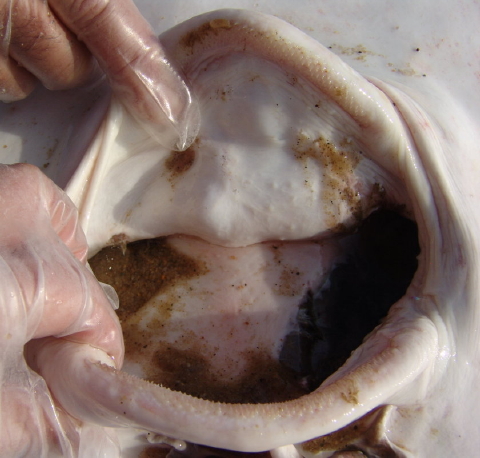On Saturday, November 19th, the Turtle Journal team led by Rufus discovered a male torpedo ray that had washed ashore on the eastern side of Loagy Bay opposite Lieutenant Island on Outer Cape Cod. Surprising to most residents, the torpedo ray (Torpedo nobiliana) is a regular sight on Cape Cod bayside shores each Fall as they strand for what still remains unknown reasons. What makes them especially “stunning” is their 220 volts of electric charge!
Male Torpedo Ray (Torpedo nobiliana)
In October and November, our team has discovered beached torpedo rays along bayside Cape Cod beaches from Truro to Sandwich. In November of 2008, we found many torpedo rays that had washed ashore, beginning on Guy Fawkes Day; see http://www.turtlejournal.com/?p=1448 and subsequent postings. The male torpedo ray Rufus sniffed out of the Old Wharf Landing wrack line on Saturday was fully intact without any outward sign of injury. Our necropsy of other Fall beached specimens have likewise pointed to no obvious cause of death, which has suggested that their stranding may be somehow associated with a cold-stunning phenomenon. As faithful Turtle Journal readers know, we see these torpedo ray and also ocean sunfish strandings at the leading edge of cold-stunned sea turtle stranding season each Fall.
Male Torpedo Ray with Claspers
The gender of this specimen can easily be discerned by its claspers pictured above.Â
Large Female Torpedo Ray @ Wellfleet Harbor
For those who may not be familiar with the torpedo ray, a group within which we blissfully counted ourselves until a few years ago, this fish is an electric ray that can deliver a 220-volt charge in a short duration burst. The torpedo ray is a cartilaginous fish … like sharks and skates. Its shape is a round, flat disk with a relatively short, large caudal fin that has two dorsal fins. While this ray can reach 6 feet long and 200 pounds, most torpedo rays taken from the Atlantic fall in the 75 pound range. (We necropsied a 150-pound female torpedo ray this season.) It does not have spines or thorns that are characteristic of common skates. Small eyes are set forward and this ray’s color is brownish or purplish on the dorsal (top) surface and white on the ventral (bottom) side.
Examining Large Female Torpedo Ray in 2008
Habitat for the nocturnal torpedo ray is benthic (bottom of the sea) where it buries itself in the sand during the day. While described as pelagic, torpedo rays can be found mostly along the continental shelf in water from 10 to 350 meters deep. They are not common within inshore waters. This fish is the only electric ray that is found in the northwest Atlantic Ocean and historic records document torpedo rays in Vineyard Sound, Buzzards Bay and Cape Cod Bay, especially the Provincetown area.
Large Female Torpedo Ray from 2008
This specimen was identified as a female with pelvic fins and no claspers.
 Torpedo Ray Egg Sacs
The eggs sacs above were removed from a large, 150-pound female torpedo ray that stranded in Cape Cod Bay this year. Note the varying sizes of the individual eggs within the sacs.Â
Internal Organs of Large Female Torpedo Ray
Two egg sacs were discovered in a band located anterior of the two large liver lobes. Factoid: Torpedo ray females bear live young.
 Section from Left Electrical Organ of Large Torpedo Ray
The torpedo ray has two kidney-shaped electrical organs that make up 20% of its weight and are located on the pectoral fins. They generate a power equivalent to 220 volts that stuns prey with a burst of electric current. Its prey includes flounder, silver hake fish, small sharks such as dogfish, eels, worms and crustaceans. After stunning its prey, the torpedo ray guides food with its pectoral fins toward its protruding mouth for ingestion.
Torpedo Ray Mouth
Torpedo rays have no significant commercial value today. Once upon a time when Southeast Massachusetts was the OPEC of its day, providing the energy that lit the entire world, liver oil of torpedo rays was considerd equal to the best sperm whale oil for illumination. Some in those days said that torpedo ray oil cured cramps if rubbed externally and stomach ailments when taken internally. We can attest to the fact that the torpedo ray is one awfully oily fish that we had to wrestle into place to take measurements and capture documentary images. (You’re right it was mucus and not oil, but the allusion wouldn’t have worked if we had said “slimy†rather than “oily.â€)
